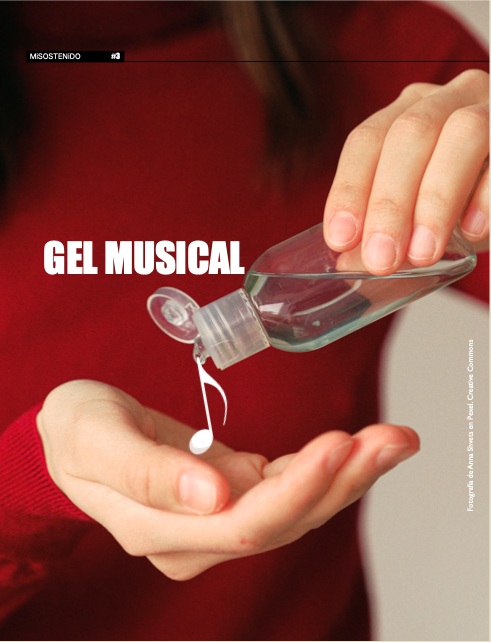Mejorar las habilidades lectoras y la autoestima en estudiantes con dislexia. Una propuesta de intervención musicoterapéutica.
Palabras clave:
Musicoterapia, Educación Primaria, dislexia del desarrollo, habilidades lectoras, autoestimaResumen
Actualmente, los estudiantes de Educación Primaria presentan diversos trastornos de aprendizaje, los cuales dificultan el proceso de enseñanza y aprendizaje de estos. En este sentido, el trastorno específico del aprendizaje más común en la realidad educativa se denomina dislexia del desarrollo, padeciéndolo entre un 5% - 15% del alumnado en las escuelas, y constituyendo el 80% de los diagnósticos de los trastornos de aprendizaje. Este trastorno supone un gran obstáculo para la adquisición de la lectura en los estudiantes que lo padecen, repercutiendo, así, en sus habilidades lectoras, su rendimiento académico, motivación, autoestima y autoconfianza. Además, se pueden encontrar problemas emocionales y de conducta, así como situaciones de abandono escolar. Resulta evidente que dicho trastorno genera una importante necesidad educativa al respecto. Consecuentemente, el presente artículo plantea el diseño de una propuesta de intervención basada en la disciplina de la musicoterapia para poder favorecer las habilidades lectoras y la autoestima del alumnado con dislexia en Educación Primaria, tratando de destacar el gran valor terapéutico de la música y su eficacia en el tratamiento de este trastorno.
Descargas
Citas
Alexander-Passe, N. (2007). The sources and manifestations of stress amongst school-aged dyslexics, compared with sibling controls. Dyslexia, 14, 291-313. https://doi.org/10.1002/dys.351
Anvari, S. H., Trainor, L. J., Woodside, J. & Levy, B. A. (2002). Relations among musical skills, phonological processing, and early reading ability in preschool children. Journal of Experimental Child Psychology , 83(2), 111-130. https://doi.org/10.1016/S0022-0965(02)00124-8
Artigas-Pallarés, J. (2002). Problemas asociados a la dislexia. Revista de Neurología , 34(1), 7-13. https://doi.org/10.33588/rn.34S1.2002063
Besson, M., Chobert, J. & Marie, C. (2011). Transfer of training between music and speech: common processing, attention, and memory. Frontiers in Psychology, 2(94). https://doi.org/10.3389/fpsyg.2011.00094
Cogo-Moreira, H., Andriolo, R., Yazigi, L., Ploubidis, G., Brandao de Ávila, C. R. & Mari, J. (2012) Music education for improving reading skills in children and adolescents with dyslexia. Cochrane Library: Cochrane Database of Systematic Reviews, 8(8). https://doi.org/10.1002/14651858.CD009133.pub2
De la Peña, C. y Bernabéu, E. (2018). Dislexia y discalculia: una revisión sistemática actual desde la neurogenética. Universitas Psychologica, 17(3). https://doi.org/10.11144/Javeriana.upsy17-3.ddrs
Etchepareborda, M. C. (2002). Detección precoz de la dislexia y enfoque terapéutico. Revista de Neurología, 34(1), 13-23. https://doi.org/10.33588/rn.34S1.2002041
Flaugnacco, E., Lopez, L., Terribili, C., Montico, M., Zoia, S. & Schön, D. (2015). Music Training Increases Phonological Awareness and Reading Skills in Developmental Dyslexia: A Randomized Control Trial. PLoSONE, 10(9), e0138715. https://doi.org/10.1371/journal.pone.0138715
Flaugnacco, E., Lopez, L., Terribili, C., Zoia, S., Buda, S., Tilli, S., Monasta, L., Montico, M., Sila, A., Ronfani, L. & Schön, D. (2014). Rhythm perception and production predict reading abilities in developmental dyslexia. Frontiers in Human Neuroscience, 8, 392. https://doi.org/10.3389/fnhum.2014.00392
Forgeard, M., Schlaug, G., Norton, A., Rosam, C., Iyengar, U. & Winner, E. (2008). The relation between music and phonological processing in normal-reading children and children with dyslexia. Music Perception, 25(4), 383-390. https://doi.org/10.1525/mp.2008.25.4.383
Forteza, D., Fuster, L. y Moreno-Tallón, F. (2019). Barreras para el Aprendizaje y la Participación en la Escuela del Alumnado con Dislexia: Voces de familias. Revista Internacional de Educación para la Justicia Social, 8(2), 113-130. https://doi.org/10.15366/riejs2019.8.2.006
Gfeller, K. E. (1999). Music therapy in the schools. En Davis, W. B., Gfeller, K. E. & Thaut, M. H. (Eds.). An introduction to music therapy: Theory and practice (pp. 259-272). McGraw- Hill.
Goswami, U., Huss, M., Mead, N., Fosker, T. & Verney, J. P. (2013). Perception of patterns of musical beat distribution in phonological development dyslexia: Significant longitudinal relations with word rea- ding and reading comprehension. Cortex, 49(5), 1363-1376. https://doi.org/10.1016/j.cortex.2012.05.005
Habib, M., Lardy, C., Desiles, T., Commeiras, C., Chobert, J. & Besson, M. (2016). Music and Dyslexia: A New Musical Training Method to Improve Rea- ding and Related Disorders. Frontiers in Psychology, 7(26), 1-15. https://doi.org/10.3389/fpsyg.2016.00026
Jellison, J. A. (2000). A content analysis of music re- search with disabled children and youth (1975-1999): Applications in special education. En Smith, D. S. (Ed.). Effectiveness of music therapy procedu- res: Documentation of research and clinical practice (pp. 199-264). Silver Spring, MD. The American Music Therapy Association.
Kennedy, R. & Scott, A. (2005). A Pilot Study: The Effects of Music Therapy Interventions on Middle School Students' ESL Skills. Journal of Music Therapy , 42(4), 244–261. https://doi.org/10.1093/jmt/42.4.244
López, A. (2015). Musicoterapia con adolescentes bajo medidas judiciales en régimen abierto. Música, Terapia y comunicación, 35, 31-48.
Louleli, N., Hämäläinen, J. A., Nieminen, L., Parviainen, T. & Leppänen, P. H. T. (2020). Dynamics of morphological processing in pre-school children with and without familial risk for dyslexia. Journal of Neurolinguistics , 56, 1-21. https://doi.org/10.1016/j.jneuroling.2020.100931
Madsen, C. K. & Alley, J. M. (1979). The effect of reinforcement on attentiveness: A comparison of behaviorally trained music therapists and other professionals with implications for competency-based academic preparation. Journal of Music Therapy, 16(2), 70-82. https://doi.org/10.1093/jmt/16.2.70
Madsen, S. (1991). The effect of music paired with and without gestures on the learning and transfer of new vocabulary: experiment-derived nonsense words. Journal of Music Therapy, 28(4), 222-230. https://doi.org/10.1093/jmt/28.4.222
Mina, F., Darweesh, M. E., Khavab, A. N. & Serag S. M. (2021). Role and efficacy of music therapy in learning disability: a systematic review. The Egyptian Journal of Otolaryngology, 37(1). https://doi.org.10.1186/s43163-021-00091-z
Montello, L. (1998). Effects of active versus passive group music therapy on preadolescents with emotional, learning, and behavioral disorders. Journal of Mu sic Therapy, 35(1), 49-67. https://doi.org/10.1093/jmt/35.1.49
Overy, K. (2000). Dyslexia, temporal processing, and music: the potential of music as an early learning aid for dyslexic children. Psychology of Music, 28, 218–229. https://doi.org/10.1177/0305735600282010
Overy, K. (2006). Dyslexia and Music. From Timing Deficits to Musical Intervention. The New York Academy of Sciences, 999(1), 497-505. https://doi.org/10.1196/annals.1284.060
Pasiali, V., LaGasse, A. B. & Penn, S. L. (2014). The effect of musical attention control training (MACT) on attention skills of adolescents with neurodevelopmental delays: A pilot study. Journal of Music Therapy, 51(4), 333-354. https://doi.org/10.1093/jmt/thu030
Peterson, R. L. & Pennington, B. F. (2012). Developmental dyslexia. Lancet, 379(9830), 1997–2007. https://doi.org/10.1016/S0140-6736(12)60198-6
Przybylski, L., Bedoin, N., Krifi-Papoz, S., Herbillon, V., Roch, D., Léculier, L., Kotz, S.A. y Tillmann, B. (2013). Rhythmic auditory stimulation influences syntactic processing in children with developmental language disorders. Neuropsychology, 27(1), 121–131. https://doi.org/10.1037/a0031277
Ramus, F., Rosen, S., Dakin, S. C., Day, B. L., Castellote, J. M., White, S. y Frith, U. (2003). Theories of developmental dyslexia: insights from a multiple case study of dyslexic adults. Brain, 126(4), 841- 865. https://doi.org/10.1093/brain/awg076
Register, D., Darrow, A., Standley, J. y Swedberg, O. (2007). The Use of Music to Enhance Reading Skills of Second Grade Students and Students with Reading Disabilities. Journal of Music Therapy, 44(1), 23-37. http://dx.doi.org/10.1093/jmt/44.1.23
Serrano, F. y Defior, S. (2008). Dyslexia speed problems in a transparent orthography. Annals of Dyslexia, 58, 81-95. http://dx.doi.org/10.1007/s11881-008-0013-6
Snowling, M. J., Hulme, C. y Nation, K. (2020). Defining and understanding dyslexia: past, present, and future. Oxford Review of Education, 46(4), 501-513. https://doi.org/10.1080/03054985.2020.1765756
Soriano-Ferrer, M. y Piedra, E. (2017). Una revisión de las bases neurobiológicas de la dislexia en población adulta. Neurología, 32(1), 50-57. https://doi.org/10.1016/j.nrl.2014.08.003
Standley, J.M. (1997). Evaluation of an early intervention music curriculum for enhancing prereading/ writing skills. Music Therapy Perspectives, 15, 79-85.
Standley, J. M. (2008). Does music instruction help children learn to read? Evidence of a meta-analysis. Update: Applications of Research in Music Education, 27, 17–32. http://dx.doi.org/10.1177/8755123308322270
Sugaya, A., Fukushima, K., Takao, S., Kasai, N., Maeda, Y., Fujiyoshi, A., Kataoka, Y., Kariya, S. y Nishizaki, K. (2019). Impact of reading and writtng skills on academic achievement among school-aged hearing-impaired children. International Journal of Pediatric Otorhinolaryngology, 126. https://doi.org/10.1016/j.ijporl.2019.109619
Vellutino, F.R., Fletcher, J.M., Snowling, M.J. y Scanlon, D.M. (2004). Specific reading disability (dyslexia): What have we learned in the past four decades? Journal of Child Psychology and Psychiatry and Allied Disciplines, 45(1), 2-40. https://doi.org/10.1046/j.0021-9630.2003.00305.x
Wolfe, D.E. y Noguchi, L.K. (2009). The use of music with young children to improve sustained attention during a vigilance task in the presence of auditory distractions. Journal of music therapy, 46(1), 69–82. https://doi.org/10.1093/jmt/46.1.69








